Saunders-Roe SR.A/1

Xtrakit,
1/72 scale
S
u m m a r y : |
Description and Item No.: |
Xtrakit Kit No. SW 72017 - Saunders-Roe SR.A/1 |
Contents and Media: |
75 parts in grey coloured plastic on two sprues, three parts on one photo-etched fret,three parts in clear plastic; 3D printed instrument panels and cockpit detail; markings for the prototype; instructions. |
Price: |
GBP£26.99 EU Price (£22.49 Export Price) Plus Shipping at Hannants |
Scale: |
1/72 |
Review Type: |
First Look |
Advantages: |
Unique subject; good quality mouldings; three display options - waterline, full hull or in flight; includes photo-etched and 3D printed parts; high quality decals. |
Disadvantages: |
|
Recommendation: |
Xtrakit's 1/72 scale Saunders-Roe SR.A/1 is a unique and interesting model with good quality moulding and effective use of multi-media parts. The waterline and in-flight configuration options suggest some interesting diorama possibilities too. |
Reviewed by Brett Green

The Saunders-Roe SR.A/1 was a prototype flying boat fighter aircraft designed and built by British seaplane manufacturer Saunders-Roe. It was the first jet-propelled water-based aircraft in the world.
The concept behind the SR.A/1 originated during the Second World War as a reaction to Japan's successful use of military floatplanes and the emergence of the turbojet engine.
Saunders-Roe presented an initial proposal of their jet-powered seaplane concept, then designated SR.44, to the Air Ministry during mid-1943. In April 1944, the Ministry issued Specification E.6/44 for the type and supported its development with a contract for three prototypes. Development was protracted by Saunders-Roe's work on other projects, the war having ended prior to any of the prototypes being completed. On 16 July 1947, the first prototype made its maiden flight.
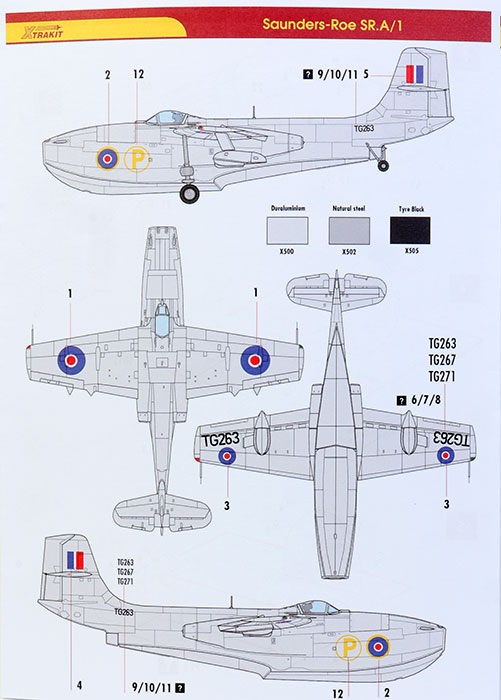
The SR.A/1 was evaluated by the Royal Air Force (RAF), who concluded that the design was incapable of matching the performance of land-based designs.
Despite interest from foreign governments, including the United States, no orders for the SR.A/1 materialised. As such, it never entered volume production or saw service with any operators.
While interest in the SR.A/1 programme was briefly revived following the start of the Korean War, the aircraft was considered to be obsolete by that point and was again rejected.*
It has been quite a while since the last Xtrakit offering. I believe the last one was their 1/72 scale Vampire back in 2014.
Xtrakit's latest release is a 1/72 scale Saunders-Roe SR.A/1. This is the first time that we have seen this type in injection moulded plastic.
The end-opening box contains 75 parts in grey plastic, three parts in clear plastic, a photo-etched fret and decals for the prototype. These main sprues are packed in a large single ziplock clear plastic bag, with the smaller parts.
The grey plastic parts are moulded onto two sprues with fine attachment points.
Sword from the Czech Republic moulded the kit so if you have built any of their recent offerings you will know what to expect. The quality of the smooth grey plastic is very good but being a limited run kit, there are none of the little luxuries such as locating pins and tabs, so take time when aligning and gluing the plastic parts.
With a bit of extra time and care you will come up with a good result.
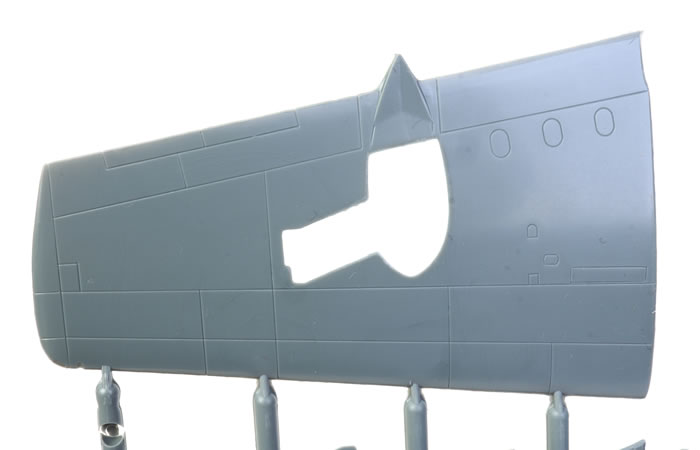
The fine consistent recessed panel lines are well done.
The cockpit is broken down with sidewall detail moulded onto separate parts representing the interior of the sidewalls. Moulding is crisp and detail is good here. It should pop out with careful painting and weathering.
The instrument panel is a single plastic part with raised circles for bezels.
Xtrakit has supplied a 3D printed self-adhesive Kits-World cockpit enhancement set that includes the instrument panel, left and right side consoles, smaller supplementary panels, trim wheel, seat packs, headrest front and sides and harness straps.

These will be very comprehensive and should look great in the finished cockpit.
You will need to carve / grind down some raised detail on the instrument panels and sidewalls but this should be within the skill set of a moderately experienced modeller.
Four photo-etched parts are included. These are a simple grill for the jet intake and three trim strips for the lower rear fuselage.
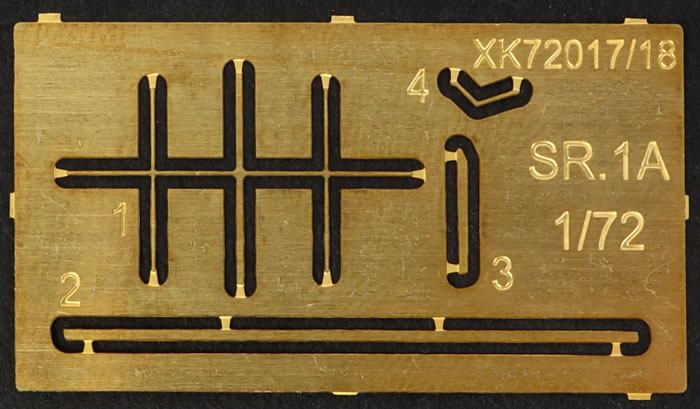
The clear parts are small but nicely forrmed. The windscreen is a separate part.
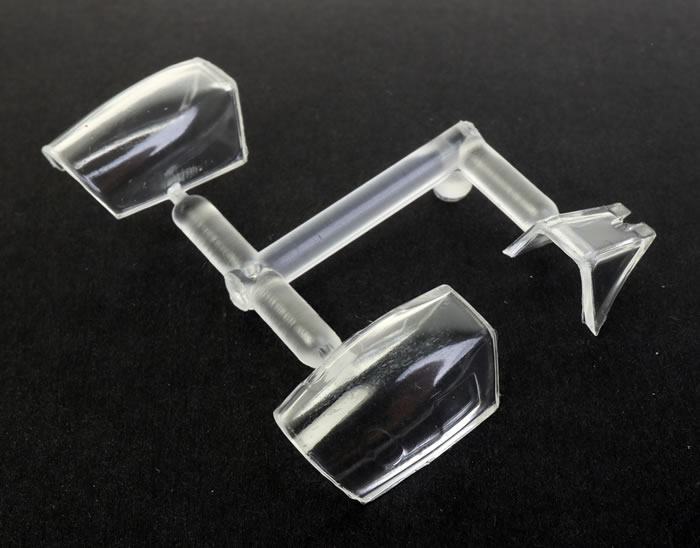
Alternative main canopy parts are offered. One is clear while the other just has two small windows on each side.
Alternative rear sections are supplied for different variants so make sure you use the correct one (Part C5). The windscreen is a separate part so the canopy may be posed open if you wish.
The outrigger floats may be posed deployed or retracted, offering the possibility of an in-flight pose.
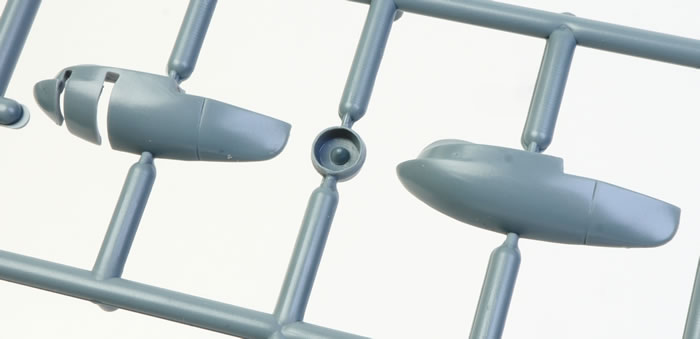
Optional beaching gear is provided too – two legs for the mid-fuselage and one at the rear.
The interior of the fuselage halves are moulded with fine raised lines that may be used as a guide to cut if you want to take up the waterline option.
The back of the box is printed with a water photo that may be cut out and used as a base for the waterline option.
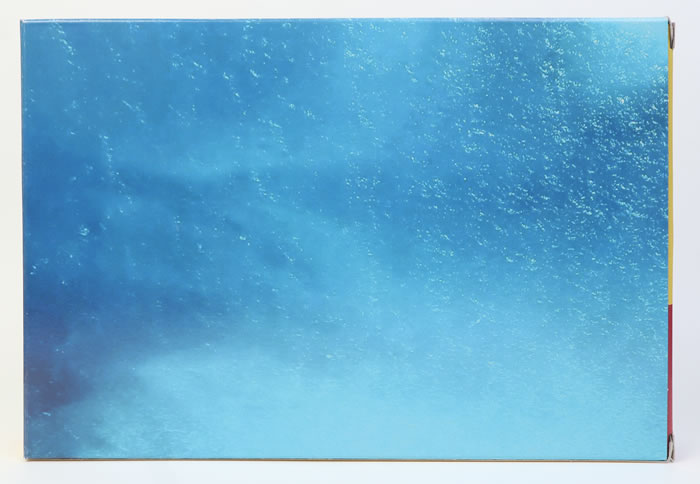
Kit breakdown is otherwise conventional with full length fuselage halves. Wings are upper and lower halves on the port and starboard sides with separate sidewalls. The fuselage features a wing spar that will reinforce the wings and set the correct dihedral.
Another nice touch is the inclusion of self-adhesive painting masks for the canopy, the windscreen and the wheels. A separate illustrated masking instruction seat is included.
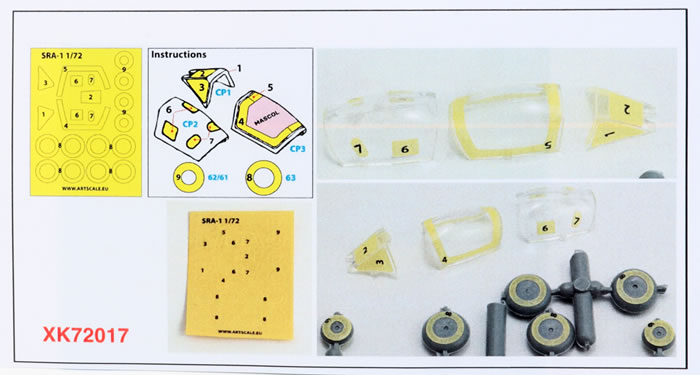
Markings are provided for the prototype, finished in overall High Speed Silver paint.
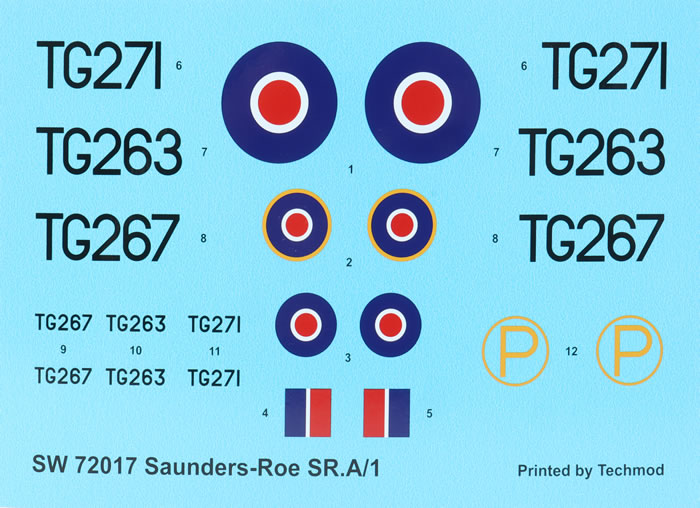
Decals are printed by Techmod. They are glossy and in good register.
Xtrakit's 1/72 scale Saunders-Roe SR.A/1 is a unique and interesting model with good quality moulding and effective use of multi-media parts. The waterline and in-flight configuration options suggest some interesting diorama possibilities too.
* Historical summary courtesy of Wikipedia
Thanks to Hannants for the sample
Review Text and Images Copyright © 2022 by Brett Green
Page Created 31 October, 2022
Last updated
1 November, 2022
Back to HyperScale Main Page
Back to Reviews Page

|
Home
| What's New |
Features |
Gallery |
Reviews |
Reference |
Forum |
Search